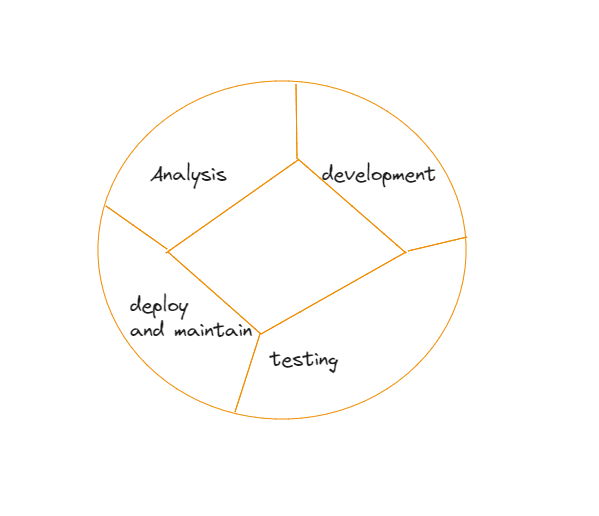RPA Life Cycle
 TechReview_SS
TechReview_SS
Introduction to RPA
RPA is one of the technologies which is rapidly growing at an exponential rate. This technology has been available for two decades. In recent years this technology has garnered the attention of many markets related to enterprise. Now RPA enables successful transformation automating tasks that are repetitive and time-consuming. This enables free human resources for performing manual labor which can be tiresome and lets them focus on the aspect of the company that is critical.
Why life cycle of RPA is important?
RPA life cycle management is crucial for optimizing processes, ensuring cost-efficiency, mitigating risks, maintaining performance, enhancing the customer experience, and ultimately gaining a competitive advantage. It allows organizations to harness the full potential of RPA technology while addressing the evolving needs of the business environment.
The life cycle of RPA
RPA has a certain life cycle, which means the stages they have been divided into. This would provide us with an idea of how a RPA bot is developed. So RPA has been divided into four stages: -

Analysis: - It is the first stage of the RPA. The main function of this phase is to identify the potential areas where RPA can be beneficial. This also includes the evaluation of feasibility and the potential ROI after automation of the process.
Development: - The team for the development starts working on the requirements for building the bot. Depending on what requirement of the bot there might be some coding required. Usually, there is no sort of coding involved in this phase.
Best Practices that one can follow during the development phase of the bot:
While a bot is being built by any organization, we need to have enough reasoning for what the bot is being built for. The bots which are now being used have been divided into categories: -
Entertainment bots
Bots which are related to finance and many more.
The first practice that we should develop is the clarity of what we want to build. We also need to focus on another aspect while building a chatbot, which is the return on investment that it should bring.
The second thing that needs to be considered is to identify the correct scenarios. As the technology of the bot is improving day by day, various businesses or organizations are moving towards more cases where the judgment of human reasoning and efforts have been required. There are some relevant use cases where this is nowadays used: -
Assistant bots: - This enables the user to improve productivity, by automating tasks that are routine type, like when the meeting needs to be scheduled, reminders need to be set and email responding.
Finance-related: - These are the chatbots that are being used by the financial industry. They do communicate with the clients 24/7.
Supplementing practices of HR: - There is a bot that is being used by the department of HR to make the management performance better, smoother, and more profitable.
The third thing is we need to choose the right framework for the bot development. There is RPA framework which is a kind of collection of open-source libraries and tools and is being designed in such a manner that it can be used with both the Robot Framework and Python.
The fourth thing is it is well-designed and should be able to automate the routine or mundane tasks of an employee. it should also fit into the business model. The chatbot that is created should have a basic understanding of the business logic and it should also convey the end results to an employee who can understand that.
The fifth thing is that we should not think a bot is a replacement in terms of human interaction. So the responsibility of the development team should be to make the bot user-friendly. To make this user-friendly the bot requires logic in terms of conversation where it will be able to understand the perspective of the context in terms of the user and lead the conversation.
The sixth thing that we should consider is the tone of the chat. The tone of the chat is crucial in terms of interacting with the commercial and services related to customers. The reply of the bot should be similar to that of an employee such that it gets the opportunity to delight existing and prospective customers. For example: - it should be capable enough to understand the frustrated customer and calm the situation. Similarly, it should also express gratitude to a happy customer.
The last and most important thing is the expectation of failure. The reply of the bot can be non-linear or not even predictable by the developer of the bot.
Testing: - The developer team starts testing the bot which has been developed. The bots are tested in a pre-production type of environment where the examination takes place, like how users can use them in automating the task. If by any chance the testing fails, it again gets back to the phase of development. In this situation, they try to find the errors that they discover in the testing phase and try to solve them. Once the bot successfully passes the testing phase, it is sent to the next one which is the development phase.
Deploy and maintain: - As the bot successfully passes the testing phase in the pre-production environment, it is deployed in the production environment. Users can now start automating their tasks. Now, if the bots still cause problems, they are transferred to the development phase and testing phase.
Advantages
There are some advantages which we will discuss in the following points: -
Quality Improvement: - RPA can enable the user to be safe from repetitive tasks. When the task is repetitive, there might be a chance of making mistakes. So, when the process gets automated, errors happen less, and the work is of higher quality.
Time management: - When the process is automated, it can reduce the amount of time. Unlike us humans, who will pause in between. It enables the user to have their focus on those areas, where human reasoning is sort of required.
Cost-effective: - RPA enables the automation of many employee tasks. As time is fixed and, errors are to happen very less. So it raises the productivity of the work and also raises the overall productivity of the corporation.
Disadvantages
Job Loss: - As the task gets automated with the help of RPA, there is a probable chance few people are going to lose their jobs. This kind of involves those people where people are working on repetitive jobs.
Cost: - Installation of the licensed software is quite high.
skilled staff: - As RPA is a new technology there are roughly any people who are well equipped or have in-depth knowledge in this.
Conclusion
In conclusion, RPA is a technology transformer that can offer significant advantages like improvement in quality, management in time, and effectiveness in costing. However, each software that comes in the market always has challenges, which include potential displacement in Jobs, and the high initial cost. So we can say that effective management of the RPA life cycle is crucial for organizations that want to harness their true potential and remain competitive in this automated world.
Subscribe to my newsletter
Read articles from TechReview_SS directly inside your inbox. Subscribe to the newsletter, and don't miss out.
Written by
TechReview_SS
TechReview_SS
Sharing about tech - reviews, comparisons, customizations of products.